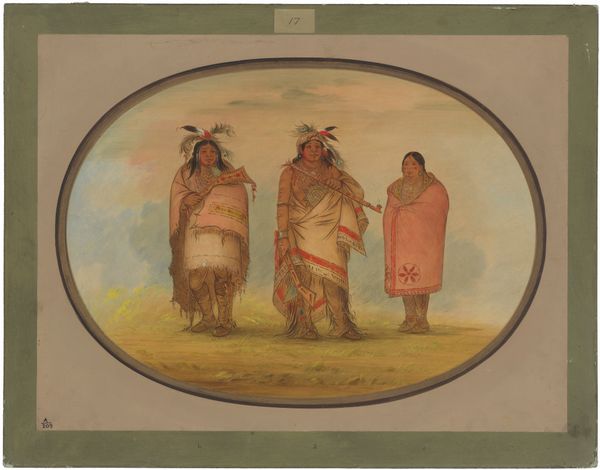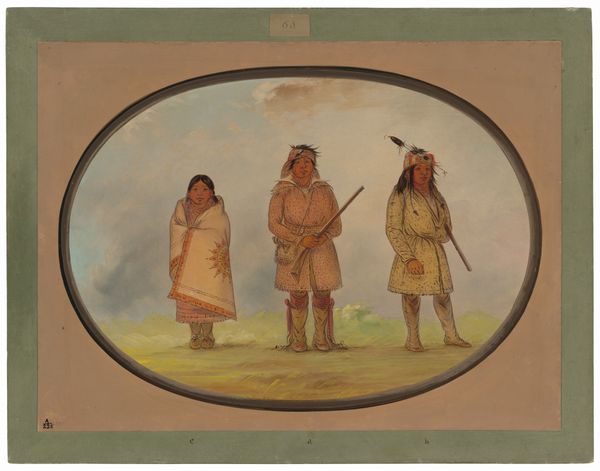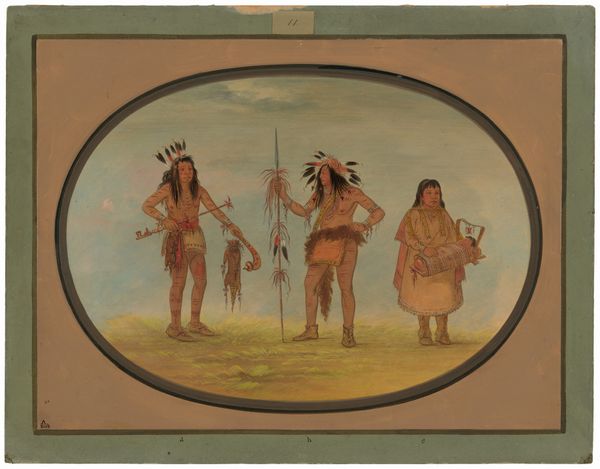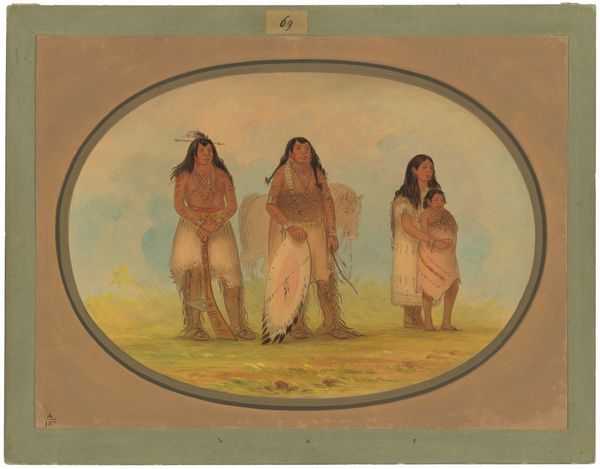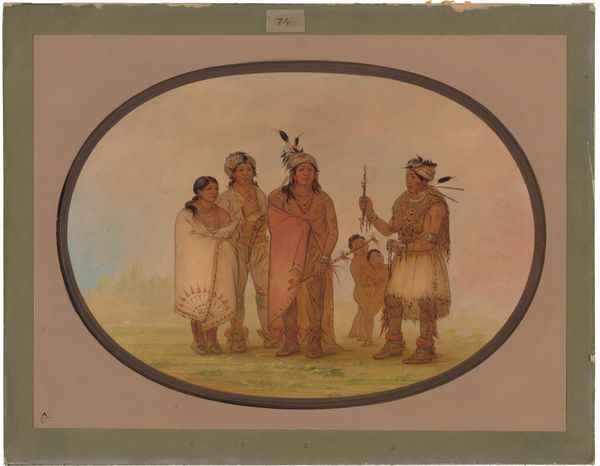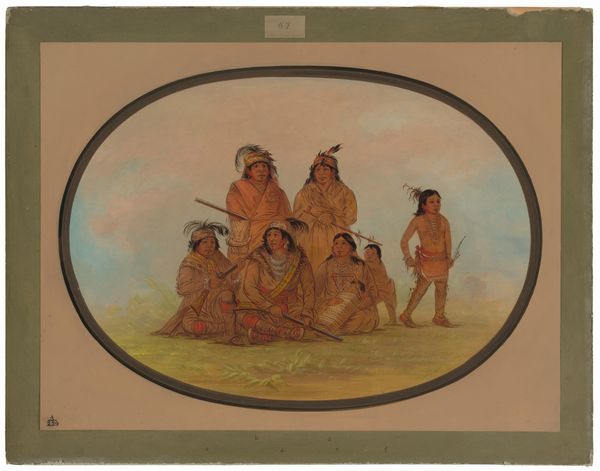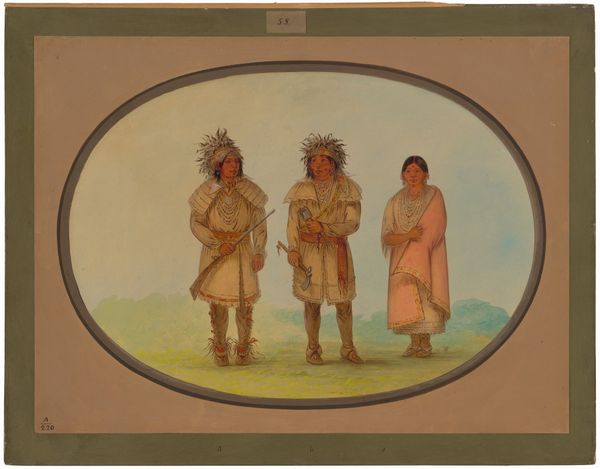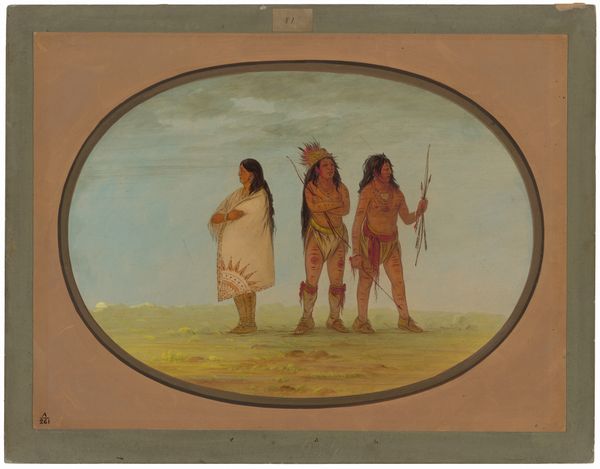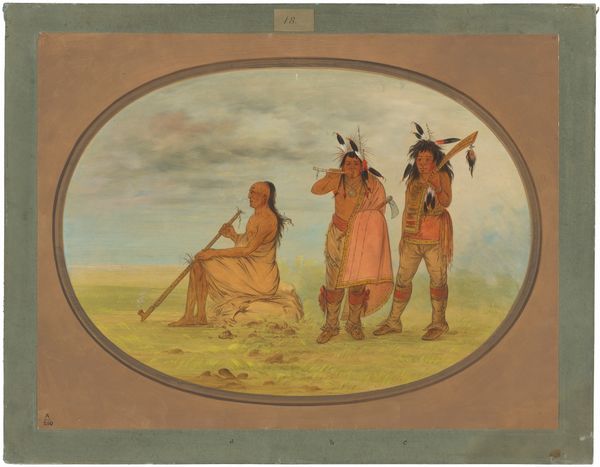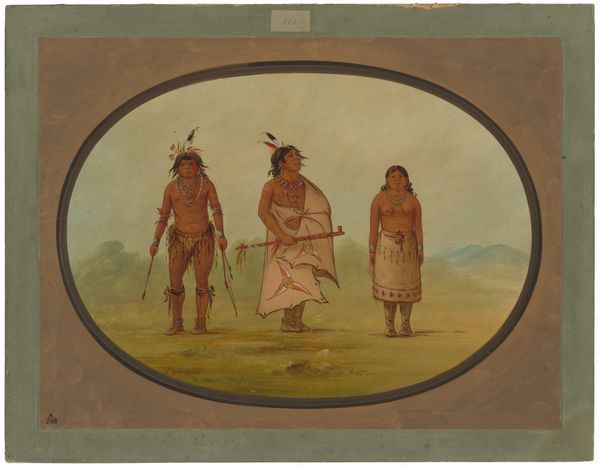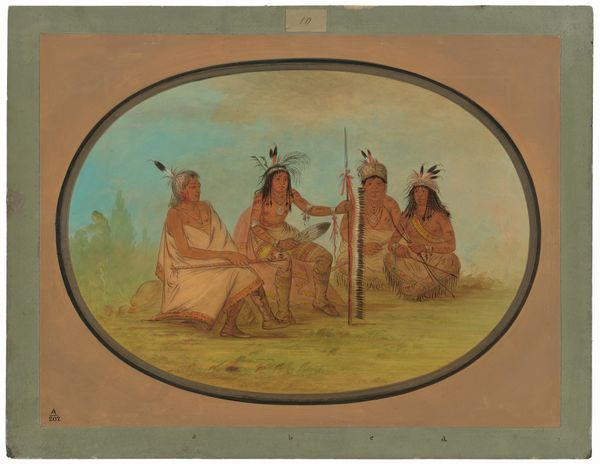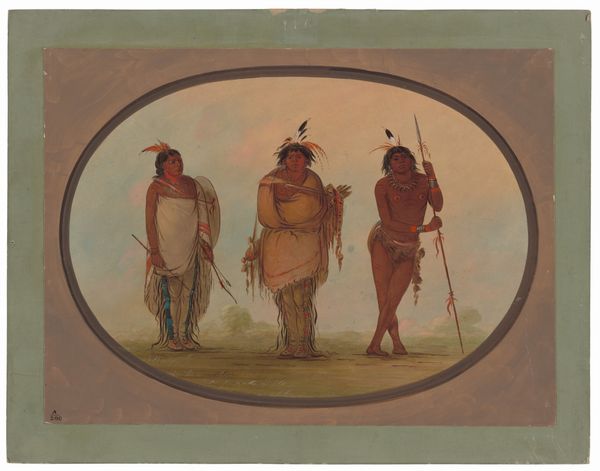
painting, gouache
#
portrait
#
water colours
#
painting
#
gouache
#
coloured pencil
#
watercolor
#
indigenous-americas
Dimensions: overall: 47.6 x 63.3 cm (18 3/4 x 24 15/16 in.)
Copyright: National Gallery of Art: CC0 1.0
Curator: Looking at this George Catlin drawing, "Seneca Chief, Red Jacket, with Two Warriors," created sometime between 1861 and 1869, I'm immediately struck by its composition. The figures, framed by what appears to be Niagara Falls in the background, have a strong, stoic presence. Editor: The even, pale lighting across their faces certainly adds to that. It lends the piece an almost documentary feel. Let's think about Catlin's processes here; these aren't oils, but watercolor and what appear to be colored pencils on paper. Was he aiming for anthropological accuracy? What level of access did he have? Curator: Catlin aimed to document Native American life before, as he saw it, their cultures vanished. His role was definitely influenced by the social and political climate of the 19th century, marked by westward expansion and displacement. But even so, we need to be critical. Editor: Absolutely. Considering the modes of art production—the paper, pigments, and Catlin’s access to them—how do these materials reinforce, or perhaps undermine, any attempt at an objective portrayal? For example, consider the vibrant colours. Curator: They undeniably romanticize the scene, don't they? Though these were created some decades after Catlin's travels, the effect still seems carefully composed to appeal to an eastern audience eager for portrayals that didn't challenge dominant narratives. It plays into the exoticism so often projected onto indigenous people. Editor: It brings the art market into play, doesn't it? The materials speak to a specific economy. Paper and watercolors are more easily transported than oils, cheaper for a touring artist, and therefore open access and distribution to wider publics who probably understood little about the people in this representation. We're dealing with crafted and material realities in tandem. Curator: Precisely. Thinking about that legacy and impact allows a better understanding of both Catlin and the world in which the work emerged, with implications for what it represents even today. Editor: I think by observing this work we not only perceive some of its intrinsic construction but its power as it intersects with socio-political perspectives too. Thank you.
Comments
No comments
Be the first to comment and join the conversation on the ultimate creative platform.
